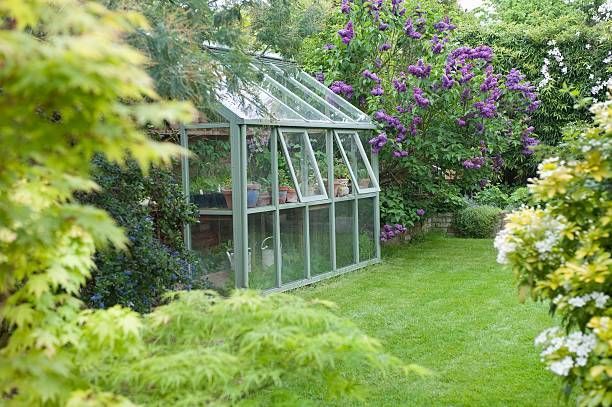Tailored to Excellence: Monarch Custom Greenhouse Utah Workmanship
Wiki Article
The Future of Greenhouses: Innovations in Lasting Farming
Are you interested regarding the future of greenhouses and how they are revolutionizing lasting agriculture? From sophisticated environment control systems to vertical farming strategies, water-efficient watering approaches, renewable power assimilation, and wise data analytics, these improvements are transforming the means we grow our food.Advanced Climate Control Systems
To attain ideal growing problems, you can rely upon the innovations in greenhouses with advanced climate control systems. These systems have actually revolutionized the way we grow crops, giving a regulated atmosphere that contributes to plant development. With these innovative systems, you can currently manipulate temperature, humidity, light levels, and even CO2 concentrations to create the ideal problems for your plants to thrive.Among the crucial features of these advanced environment control systems is their capability to control temperature. By utilizing sensing units and automated controls, the greenhouse can adjust the temperature based upon the certain demands of the plants. This ensures that they are never ever exposed to extreme warmth or chilly, which can be detrimental to their growth.
Humidity control is one more critical element of these systems. By maintaining the suitable humidity levels, you can avoid concerns such as mold, mildew, and illness from impacting your crops. These systems can additionally manage the amount of light that reaches the plants, guaranteeing that they get the optimum quantity for photosynthesis.
Furthermore, progressed climate control systems can even manipulate carbon dioxide concentrations. By enhancing the degrees of carbon dioxide in the greenhouse, you can improve plant growth and efficiency. This is specifically helpful in areas with low all-natural carbon dioxide degrees.
Upright Farming Methods
One important vertical farming method is utilizing stacked expanding systems. Monarch Greenhouse builder Utah. These systems involve setting up plants in numerous layers, up and down stacked on top of each other. By utilizing vertical room, farmers can optimize their crop yield without calling for added land. Piled expanding systems are typically utilized in city locations where area is limited.One popular approach is referred to as upright hydroponics, where plants are expanded in nutrient-rich water without soil. This strategy is highly effective as it reduces water usage by up to 90% compared to conventional farming techniques. Furthermore, given that the plants are grown inside your home, they are protected from illness and bugs, reducing the requirement for pesticides.
An additional strategy is aeroponics, which entails putting on hold the plant origins in a haze or air setting. This approach enables ideal nutrient absorption and oxygenation, resulting in faster growth and greater returns. Aeroponics also utilizes much less water than traditional farming and can be carried out in vertical systems, making it a popular selection for vertical farming.
Water-efficient Watering Methods
Optimizing water preservation is necessary when it comes to carrying out canary grass water-efficient irrigation methods in sustainable farming. With worldwide water shortage coming to be a pressing problem, it is essential to create ingenious strategies that optimize water usage in greenhouse operations.One appealing approach best lawn mower for small yard is drip watering, which delivers water straight to the plant origins, reducing waste and evaporation. By utilizing a network of tubes with small emitters, water is applied slowly and exactly, making sure that plants obtain the required dampness without excess runoff.
An additional reliable technique is using dirt dampness sensors. These tools measure the moisture content in the soil and supply real-time information to farmers. By monitoring the dirt's moisture levels, farmers can precisely identify when and just how much water to use, protecting against over-irrigation.
In addition, the application of rainwater harvesting systems is acquiring popularity in greenhouse agriculture. Accumulating rainwater from roofs and storing it in tanks permits farmers to use this natural resource for watering functions, reducing reliance on typical water sources.
Finally, the fostering of automated watering systems can dramatically enhance water performance. These systems use sensors to discover dirt moisture levels and climate condition, readjusting irrigation routines as necessary. By enhancing water usage based upon actual plant requirements, these systems can reduce water waste and promote lasting farming methods.
Renewable Power Assimilation
Renewable power integration in greenhouses supplies several benefits, consisting of lowered operating prices and decreased dependence on non-renewable power sources. The generated power can then be utilized to run different operations within the greenhouse, such as heating, lights, and air flow systems. These turbines harness wind power and convert it right into electrical power, which can be used to supplement the power demands of the greenhouse.Smart Information Analytics and Automation
To improve the performance of your greenhouse operations and enhance resource utilization, take into consideration implementing smart data analytics and automation. Smart information analytics entails gathering visite site and evaluating data from different sensors and devices within your greenhouse.
This can include automating the control of lighting, ventilation, irrigation systems, and nutrient shipment. By automating these procedures, you can make certain that your plants get the right problems and nutrients at the appropriate time, without the demand for consistent hands-on treatment.
Moreover, wise information analytics and automation can work together synergistically. The data gathered by sensors can be utilized to notify computerized systems, allowing them to make real-time modifications based on the present conditions. This assimilation of data analytics and automation can cause much more effective and exact source allowance, inevitably causing greater yields and much better plant quality.
Verdict
In verdict, the future of greenhouses in sustainable agriculture looks promising. With advanced climate control systems, upright farming strategies, water-efficient watering techniques, and sustainable power combination, greenhouses are coming to be much more ecologically pleasant and reliable.:max_bytes(150000):strip_icc()/GettyImages-1221376177-a86b340094864992a4ecbcb459093d7b.jpg)
By optimizing water usage based on real plant demands, these systems can minimize water waste and promote lasting farming techniques.

Report this wiki page